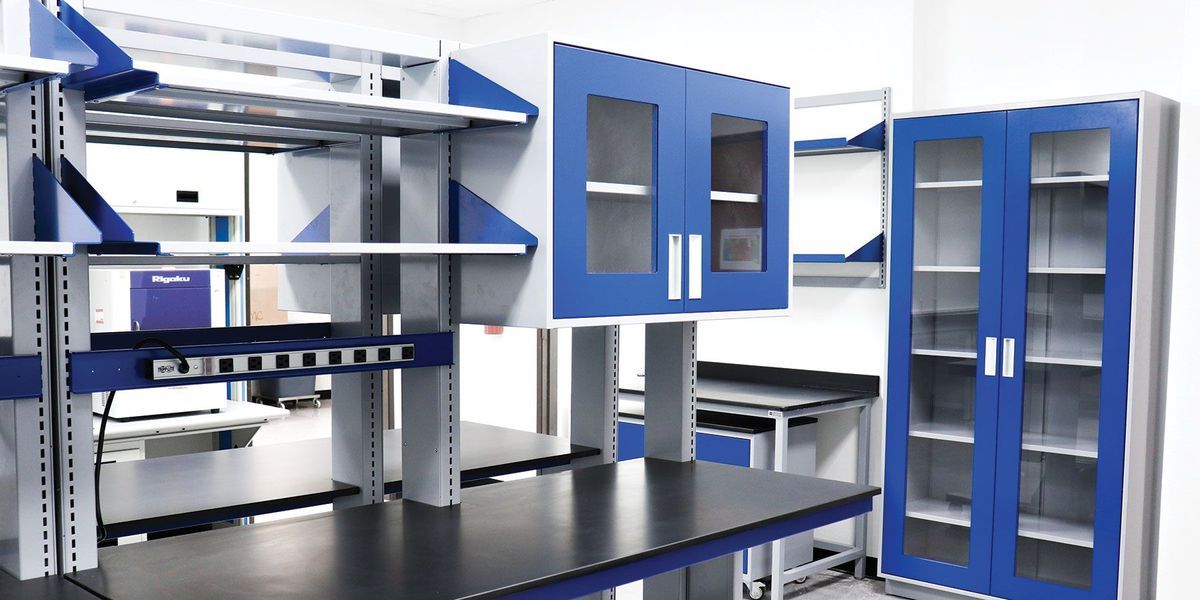In the ever-evolving world of scientific research and development, the design of laboratories plays a crucial role in ensuring safety, efficiency, and productivity. Whether you’re planning a new facility or renovating an existing one, understanding the principles of laboratory design is essential. This comprehensive guide will explore the key aspects of laboratory planning and design, including the importance of laboratory fume hoods and other critical elements that contribute to a well-functioning laboratory space.
1. Safety First: The Foundation of Laboratory Design
When it comes to laboratory design, safety should always be the top priority. A well-designed lab not only protects its occupants but also the surrounding environment and the broader community.
1.1 Proper Ventilation and Air Quality Control
One of the most critical aspects of laboratory safety is maintaining proper ventilation and air quality. This is where laboratory fume hoods come into play. These essential pieces of equipment are designed to capture, contain, and remove hazardous fumes, vapors, and particles generated during experiments or procedures.
Key considerations for ventilation and air quality control include:
- Installing adequate numbers of laboratory fume hoods based on the lab’s size and intended use
- Ensuring proper placement of fume hoods away from high-traffic areas and air supply diffusers
- Implementing a building automation system to monitor and control air quality parameters
- Designing appropriate air exchange rates to maintain a safe and comfortable working environment
1.2 Emergency Safety Equipment
Every laboratory should be equipped with easily accessible emergency safety equipment. This includes:
- Eye wash stations and safety showers
- Fire extinguishers appropriate for various types of fires
- First aid kits
- Emergency exits and evacuation routes clearly marked and unobstructed
1.3 Chemical Storage and Handling
Proper storage and handling of chemicals are crucial for maintaining a safe laboratory environment. Design considerations should include:
- Dedicated chemical storage rooms or cabinets with appropriate ventilation
- Segregation of incompatible chemicals
- Spill containment measures, such as raised lips on shelves or secondary containment trays
- Easy access to safety data sheets (SDS) for all chemicals in use
2. Efficiency and Workflow Optimization
An efficient laboratory layout can significantly impact productivity and reduce the risk of accidents. Careful laboratory planning and design can help create a space that promotes smooth workflow and minimizes unnecessary travel movement.
2.1 Modular and Flexible Design
Modern laboratories should be designed with flexibility in mind. This allows for easy reconfiguration as research needs change over time. Consider the following:
- Modular furniture and equipment that can be easily moved or rearranged
- Adaptable utility connections (e.g., power, gas, water) that can be accessed from multiple points
- Open floor plans that can accommodate various lab configurations
2.2 Ergonomics and Comfort
Designing with ergonomics in mind can help reduce fatigue and increase productivity. Key elements include:
- Adjustable workstations and seating
- Proper lighting design to reduce eye strain
- Adequate space for movement and collaboration
- Noise reduction measures to improve concentration and communication
2.3 Efficient Storage Solutions
Proper storage is essential for maintaining an organized and efficient laboratory. Consider implementing:
- High-density storage systems for equipment and supplies
- Mobile storage units for frequently used items
- Vertical storage options to maximize floor space
3. Sustainability and Energy Efficiency
Modern laboratory design should incorporate sustainable practices and energy-efficient solutions to reduce environmental impact and operating costs.
3.1 Energy-Efficient Equipment
Invest in energy-efficient laboratory equipment, including:
- Energy Star certified refrigerators, freezers, and other appliances
- LED lighting with occupancy sensors and daylight harvesting systems
- Variable air volume (VAV) fume hoods that adjust airflow based on sash position
3.2 Water Conservation
Implement water-saving measures such as:
- Low-flow fixtures and faucets
- Water recirculation systems for equipment cooling
- Greywater recycling for non-potable uses
3.3 Sustainable Materials
Choose sustainable materials for laboratory construction and furnishings, including:
- Recycled or recyclable materials for countertops and flooring
- Low-VOC paints and finishes
- Sustainably sourced wood products
4. Compliance with Regulations and Standards
Ensuring compliance with relevant regulations and standards is crucial in laboratory planning and design. This includes adherence to:
- Occupational Safety and Health Administration (OSHA) standards
- National Fire Protection Association (NFPA) codes
- American National Standards Institute (ANSI) guidelines
- Local building codes and zoning regulations
Working with experienced architects and engineers who specialize in laboratory design can help ensure that all applicable regulations and standards are met.
5. Integration of Technology
Modern laboratories should be designed to accommodate and integrate various technologies that enhance research capabilities and efficiency.
5.1 Laboratory Information Management Systems (LIMS)
Incorporate infrastructure to support LIMS, including:
- Adequate network connectivity throughout the lab
- Workstations for data entry and analysis
- Integration with laboratory equipment for automated data collection
5.2 Automation and Robotics
Design spaces that can accommodate current and future automation technologies:
- Flexible layouts to incorporate robotic systems
- Adequate power and data connections for automated equipment
- Controlled environments for sensitive instruments
5.3 Collaborative Technologies
Facilitate collaboration and communication within the lab and with external partners:
- Video conferencing facilities
- Interactive whiteboards and display screens
- Shared digital workspaces for real-time collaboration
6. Specialized Laboratory Environments
Different types of research require specialized laboratory environments. Consider the following design principles for specific lab types:
6.1 Cleanrooms
For laboratories requiring ultra-clean environments:
- Implement airlocks and gowning rooms
- Design proper air filtration and positive pressure systems
- Use materials and finishes that minimize particle generation
6.2 Biosafety Labs
For laboratories working with potentially hazardous biological agents:
- Design appropriate containment measures based on biosafety level (BSL)
- Implement proper waste management and decontamination facilities
- Ensure controlled access and security measures
6.3 Wet Labs vs. Dry Labs
Tailor the design to the specific needs of wet labs (involving chemicals and biological materials) and dry labs (focusing on computational or theoretical work):
- Wet labs: Emphasize chemical resistance, spill containment, and proper ventilation
- Dry labs: Focus on ergonomics, power distribution, and data infrastructure
7. Future-Proofing Laboratory Design
As research methodologies and technologies continue to evolve, it’s essential to design laboratories that can adapt to future needs.
7.1 Scalability
Design with potential growth in mind:
- Plan for expansion of utilities and services
- Allow for the addition of new equipment or research areas
- Consider vertical expansion options if horizontal space is limited
7.2 Adaptability to New Technologies
Create spaces that can easily incorporate emerging technologies:
- Design flexible infrastructure for power, data, and environmental controls
- Plan for potential increases in power and cooling requirements
- Consider modular designs that allow for easy reconfiguration
7.3 Interdisciplinary Collaboration
Foster interdisciplinary research by designing spaces that promote interaction:
- Create shared equipment rooms and core facilities
- Design collaborative spaces adjacent to laboratory areas
- Implement open layouts that encourage communication between different research groups
8. Cost Considerations in Laboratory Design
While designing a state-of-the-art laboratory is important, it’s equally crucial to consider the financial aspects of the project.
8.1 Life Cycle Cost Analysis
Conduct a thorough life cycle cost analysis to balance initial construction costs with long-term operational expenses:
- Evaluate energy-efficient systems and their potential savings over time
- Consider maintenance costs of various materials and equipment
- Assess the flexibility of the design to accommodate future changes without major renovations
8.2 Phased Implementation
For large-scale projects, consider a phased approach to laboratory planning and design:
- Prioritize essential facilities and equipment for initial construction
- Plan for future expansion or upgrades in subsequent phases
- Allow for budget allocation over multiple fiscal years
8.3 Value Engineering
Implement value engineering strategies to optimize costs without compromising quality or functionality:
- Evaluate alternative materials and equipment that meet performance requirements at lower costs
- Consider standardization of equipment and furnishings to reduce maintenance costs
- Optimize space utilization to reduce overall building footprint and associated costs
Conclusion
Effective laboratory planning and design is a complex process that requires careful consideration of numerous factors. By prioritizing safety, efficiency, sustainability, and adaptability, you can create a laboratory environment that not only meets current needs but also positions your facility for future success.
Remember that the key to successful laboratory design lies in collaboration between scientists, architects, engineers, and facility managers. By bringing together diverse expertise and perspectives, you can create a laboratory space that truly supports and enhances the important work being conducted within its walls.
As you embark on your laboratory design journey, keep these principles in mind, but also remain open to innovation and new ideas. The field of scientific research is constantly evolving, and your laboratory should be designed to evolve with it. With thoughtful planning and a commitment to excellence, you can create a laboratory that inspires groundbreaking discoveries and advances in science for years to come.















Leave a Reply